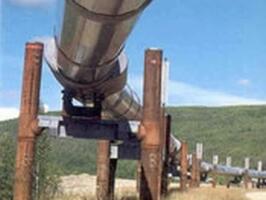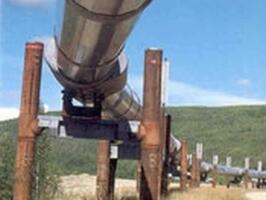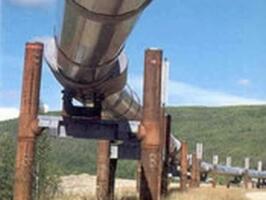Fix Decaying Pipelines First for Jobs, Health and Safety
A Commentary by Joe Conason
With the Keystone XL pipeline stalled again, now perhaps we can look ahead and consider more promising ways to rebuild our energy system, creating many more jobs than that controversial project ever would. No matter where we look, the far larger issue that still confronts Americans is decaying infrastructure -- which emphatically includes the enormous web of oil and gas pipelines crisscrossing the continental United States in every direction.
When TransCanada CEO Russ Girling touted Keystone as an engine of employment on ABC News' "This Week" last Sunday, he insisted that its construction would create 42,000 jobs. Not only would his venture create those 42,000 "direct and indirect" jobs, boasted Girling, but also those positions would be "ongoing and enduring" rather than temporary like most construction jobs; he cited a State Department study that drew no such conclusions. A company spokesman later tempered Girling's pronouncements, more or less acknowledging that they had been grossly exaggerated. The number of permanent jobs after the construction would top out at about 50. With or without Keystone, the national economy already produces about 42,000 jobs every week, so it just wouldn't matter much.
Yet even if Keystone would actually result in tens of thousands of permanent jobs, its expected impact on the environment, health and safety raised grave questions about whether it should be permitted to proceed. But there are pipeline projects of unquestioned value that could create far more jobs for many more years than any of Keystone's promoters ever contemplated.
Rather than a new pipeline for the dirtiest tar-sands fuel, what America needs is a commitment to repair the "leaks and seeps" that have made the old network of pipelines a continuing danger to health and safety, air and water -- as AFL-CIO President Richard Trumka noted in a 2013 interview with The National Memo. The labor chief estimates that a serious program of repair to degraded oil and gas facilities would mean at least 125,000 jobs a year -- three times as many as Keystone -- and they would continue for decades.
In that brief remark, Trumka alluded to an important point: With more than 2.5 million miles of corroding underground pipes, often made of steel or cast iron laid decades ago, the likelihood of deadly and potentially catastrophic accidents increases every year. Fuel and fumes that escape old pipelines every day, along with occasional large spills of petroleum products, pour carbon dioxide into the atmosphere, as well.
Using pipelines to transport natural gas and hazardous liquid fuels is generally safer than the alternatives of road and rail, but when pipeline accidents happen, they can be devastating -- as we have learned in recent years from the tragic explosions in San Bruno, California, which killed eight people and razed dozens of homes, and in Allentown, Pennsylvania, which killed five people and destroyed 50 buildings.
Officials in Michigan are concerned about the condition of 61-year-old pipelines under the Straits of Mackinac, where Lake Huron and Lake Michigan meet -- and where, if the pipelines failed, a ruinous oil spill could leave the Great Lakes in the same ruinous condition as the Gulf of Mexico after the Deepwater Horizon disaster. And New York officials worry every day about the perilous state of the city's gas mains, aging and decrepit, which exploded in East Harlem last March, killing and injuring dozens of people and causing millions in property damage.
An investigation by reporters at ProPublica, a nonprofit news service, revealed that over the past three decades, pipeline accidents have accounted for more than 500 deaths, more than 4,000 injuries and almost $7 billion in property damage -- numbers that will swell in the years ahead unless repairs and inspections are stepped up drastically. At the moment, replacing only the most dangerously corroded pipes in New York's Con Edison system is estimated to require $10 billion and 30 years of construction.
The upside of this looming threat is that confronting it would create hundreds of thousands of permanent, high-paying jobs while preserving the environment and improving public safety and health. Like so much of the incredible infrastructure left to us by previous generations, the pipelines need to be maintained, modernized or mothballed for the sake of the future. Politicians and their paymasters may prefer to look the other way, but it is a responsibility we cannot escape.
To find out more about Joe Conason and read features by other Creators Syndicate writers and cartoonists, visit the Creators Syndicate website at www.creators.com.
COPYRIGHT 2014 CREATORS.COM
See Other Political Commentary.
See Other Commentary by Joe Conason.
Views expressed in this column are those of the author, not those of Rasmussen Reports.
COPYRIGHT 2014 CREATORS.COM
Rasmussen Reports is a media company specializing in the collection, publication and distribution of public opinion information.
We conduct public opinion polls on a variety of topics to inform our audience on events in the news and other topics of interest. To ensure editorial control and independence, we pay for the polls ourselves and generate revenue through the sale of subscriptions, sponsorships, and advertising. Nightly polling on politics, business and lifestyle topics provides the content to update the Rasmussen Reports web site many times each day. If it's in the news, it's in our polls. Additionally, the data drives a daily update newsletter and various media outlets across the country.
Some information, including the Rasmussen Reports daily Presidential Tracking Poll and commentaries are available for free to the general public. Subscriptions are available for $4.95 a month or 34.95 a year that provide subscribers with exclusive access to more than 20 stories per week on upcoming elections, consumer confidence, and issues that affect us all. For those who are really into the numbers, Platinum Members can review demographic crosstabs and a full history of our data.
To learn more about our methodology, click here.



